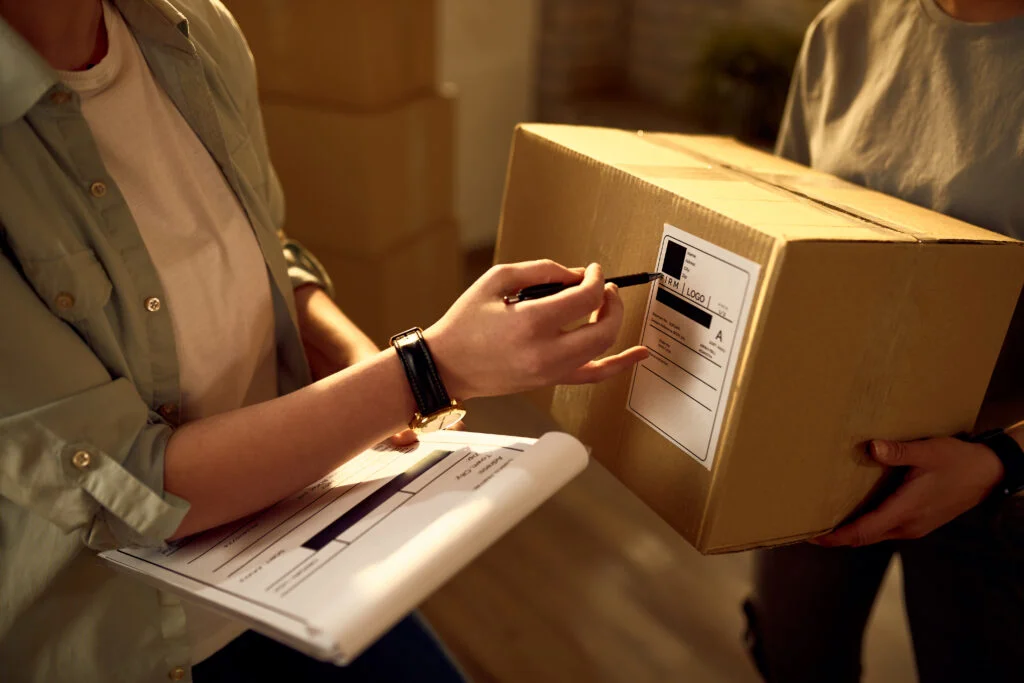Key takeaways
In order to achieve sustainability in the logistics sector, optimizing reverse logistics is essential. Businesses may eliminate waste, lower their carbon footprint, and contribute to a more sustainable future by adopting green practices and realizing the challenges associated with handling product returns. Through creative solutions like increasing visibility in the reverse supply chain and working with suppliers and consumers on product take-back programs, obstacles like ignorance and excessive shipping costs may be addressed. Reverse logistics that is sustainable has several advantages, such as lower costs, more customer satisfaction, and environmental preservation. Logistics firms may improve their brand image and positively influence society and the environment by incorporating sustainability into their operations.

Introduction
In the modern world, sustainable logistics techniques are not only in style, but also essential. In an effort to lessen their influence on the environment and satisfy the increasing consumer demand for environmentally friendly offerings, businesses are adopting sustainability into every aspect of their operations. Businesses may help create a more sustainable future by minimizing waste, lowering their carbon footprint, and emphasizing green practices and comprehending the intricacies of reverse logistics. Through creative solutions like increasing visibility in the reverse supply chain and working with suppliers and consumers on product take-back programs, obstacles like ignorance and excessive shipping costs may be addressed. Reverse logistics that is sustainable not only saves money but also improves customer satisfaction and protects the environment. Now is the moment for logistics companies to make sustainability a core part of their business strategy and pave the way for a greener, more efficient industry.
The Importance of Sustainable Practices in Logistics
Reducing the industry’s environmental effect requires the use of sustainable techniques in logistics. Logistics firms may reduce their carbon footprint and help create a more sustainable future by using green practices. These activities include conserving resources, cutting back on waste, and introducing environmentally friendly modes of transportation. Adopting sustainable practices helps businesses satisfy the increased demand for eco-friendly services while also improving their brand image and benefiting the environment. Logistics firms must integrate sustainability as a core component of their business strategy and give it top priority in their operations.
Moreover, encouraging social responsibility in environmentally conscious logistics methods extends beyond environmental preservation. It entails taking an active role in the community, endorsing fair trade policies, and funding initiatives that improve society as a whole. Logistics firms may boost the local economy and give people in the community opportunity by hiring local labor. Supporting fair trade standards also guarantees that laborers are paid fairly for their labor and are treated ethically throughout the supply chain. Communities may become stronger and more resilient via funding sustainable development projects including community outreach campaigns and renewable energy projects. In the end, socially conscious and sustainable logistics techniques are advantageous for society at large as well as for the environment.
Understanding Reverse Logistics
The management of a product’s return, repair, or disposal following client delivery is known as reverse logistics. It encompasses a product’s whole lifespan, from the point of manufacture to the point of end-of-life. In the logistics sector, reverse logistics is becoming more and more crucial as businesses look to save costs and maximize resource use. It covers things like product returns, recalls, recycling, and remanufacturing. Comprehending reverse logistics is crucial for businesses to handle product returns efficiently and reduce their environmental footprint.
The intricacy of controlling the product flow in the reverse supply chain is one of the main obstacles in reverse logistics. Reverse logistics includes a number of parties and different procedures compared to forward logistics, which moves items from the manufacturer to the customer. In order to handle product returns, repair or refurbish items, and oversee trash disposal, businesses must create effective systems and procedures. In order to maintain the efficient flow of goods and information along the reverse supply chain, reverse logistics also necessitates strong communication and coordination with clients, partners, and suppliers.
Challenges in Implementing Sustainable Reverse Logistics
For logistics organizations, putting into practice sustainable reverse logistics strategies can be difficult. Lack of knowledge and comprehension of the advantages of sustainable practices is one of the major problems. Many businesses have not completely embraced the concepts of reverse logistics and the circular economy, preferring to concentrate on conventional linear supply chains. Frontline staff members must adopt a new perspective and be committed to making changes, as does upper management.
The intricacy of overseeing reverse logistics activities presents another difficulty. Handling a wide range of items, such as hazardous materials, perishables, and electronic trash, is part of reverse logistics. To guarantee compliance with environmental rules, specialized handling and disposal techniques are needed for each type of product. In order to operate efficiently, logistics businesses must spend in specialized infrastructure, tools, and training. manage the reverse logistics process.
In addition, compared to forward logistics, reverse logistics frequently entails higher shipping costs and longer lead times. This is because items need to be transported and consolidated from many places, and product returns are fragmented. Logistics firms must devise inventive methods and optimize their transportation networks in order to save expenses and boost the effectiveness of their reverse logistics operations.

Strategies for Optimizing Reverse Logistics
Logistics firms may use a number of tactics to improve reverse logistics and make it more sustainable. Enhancing traceability and visibility in the reverse supply chain is one tactic. Businesses may follow the flow of merchandise and obtain up-to-date information on returns and repairs by utilizing technology like RFID tagging and barcode scanning. They are able to decrease waste, raise customer satisfaction, and shorten lead times as a result.
Working together with suppliers and customers to put product take-back programs into place is another tactic. Through providing incentives to consumers for returning items at the end of their lifespan, manufacturers are able to salvage valuable parts and materials for recycling or reuse. By doing this, waste is decreased and a closed-loop system with continually circulating goods is created. the supply chain.
Moreover, logistics firms might enhance the processing of returned goods by investing in cutting-edge sorting and recycling systems. Employing cutting-edge recycling techniques and automating sorting procedures allows businesses to recover more materials while lowering the environmental effect of their reverse logistics activities. Furthermore, corporations may consider forming alliances with recycling centers and waste management firms to guarantee the appropriate disposal of dangerous items and reduce the emission of pollutants into the surroundings.
Benefits of Sustainable Reverse Logistics
For logistics organizations, there are a number of advantages to implementing sustainable reverse logistics techniques. Cost reduction is one of the main advantages. Businesses may cut shipping expenses, inventory holding costs, and recoup value from returned goods by streamlining reverse logistics processes. Significant cost reductions and increased profitability may come from this.
An additional advantage is increased client satisfaction. Businesses may improve customer satisfaction by handling returns of products effectively and providing simple return procedures. Increased client loyalty, favorable word-of-mouth, and a competitive edge in the market may result from this.
Furthermore, environmentally friendly reverse logistics techniques help save the environment. Businesses may lessen their carbon footprint and preserve natural resources by encouraging recycling, cutting waste, and optimizing resource use. This strengthens the company’s standing as an ecologically conscious business and satisfies the rising demand for sustainable goods and services.
In conclusion, in order for the logistics sector to reduce its environmental effect and help create a more sustainable future, reverse logistics optimization for sustainable practices is crucial. Logistics organizations may save costs, increase customer happiness, and support environmental conservation by adopting green practices, comprehending the nuances of reverse logistics, overcoming obstacles, and putting creative solutions into reality.K
Conclusion
In summary, in order to reduce its environmental footprint and clear the path for a more efficient and environmentally friendly future, the logistics sector must adopt sustainable reverse logistics techniques. Logistics firms that prioritize sustainability may lower their carbon footprint, increase customer happiness, and aid in environmental conservation. A company may save costs, increase customer loyalty, and build a reputation for being environmentally conscious by adopting green practices, comprehending the intricacies of reverse logistics, overcoming obstacles, and putting creative solutions into reality. It’s time for logistics firms to integrate sustainability into their overall business plan and steer the sector in the direction of greater environmental responsibility and sustainability.

FAQ
How can reverse logistics activities help achieve sustainability?
Reverse logistics operations are essential for attaining sustainability because they reduce waste, maximize resource use, and advance the ideas of the circular economy. Logistics organizations may create a more sustainable future and lessen their environmental impact by managing product returns, repairs, and recycling efficiently. Reverse logistics firms may reduce expenses and increase customer satisfaction by using sustainable methods, which also help them meet the rising demand for eco-friiendly services. Logistics firms may save a lot of natural resources and lessen their carbon footprint by adopting green practices, working with partners, and investing in cutting-edge technologies. In the end, environmentally conscious companies must adopt sustainable reverse logistics practices if the logistics sector is to go in a more eco-friendly and productive manner.
How do you optimize reverse logistics?
Reverse logistics may be optimized by businesses via the use of a variety of efficient and sustainable solutions. Using technology like RFID tagging and barcode scanning to increase visibility and traceability in the reverse supply chain is one important tactic. By tracking product flow, cutting lead times, and cutting waste, businesses are able to improve the overall effectiveness of reverse logistics operations.
Establishing product take-back programs in partnership with suppliers and consumers is another successful tactic. Companies may recover valuable materials for reuse or recycling by offering consumers incentives to return items at the end of their lifespan. This creates a closed-loop system that encourages resource conservation and lowers waste.
Optimizing reverse logistics also requires investing in cutting-edge sorting and recycling equipment. Employing cutting-edge recycling techniques and automating sorting procedures helps businesses recover more materials while reducing their environmental effect. Collaborating with recycling centers and waste management firms guarantees appropriate disposal of dangerous items and minimizes environmental impact.
All things considered, businesses can save money, increase customer satisfaction, and help preserve the environment by putting these strategies into practice and adopting sustainable practices in reverse logistics. In the end, this will pave the way for a more environmentally friendly and sustainable future in the logistics sector.
What is reverse logistics for sustainable waste management processes?
In order to reduce waste and encourage environmental conservation, reverse logistics for sustainable waste management operations entails the effective processing, sorting, and disposal of returned goods. Businesses may minimize their carbon footprint, recover valuable materials for recycling, and handle returned items more efficiently by integrating sustainable practices into reverse logistics. This advances the overall objective of building a more environmentally friendly and sustainable supply chain in addition to assisting in cost savings and efficiency improvements. Reverse logistics firms may efficiently manage garbage and positively benefit the environment by collaborating with partners, investing in cutting-edge technologies, and giving priority to green practices.
What are the 5 R’s of reverse logistics?
The terms “Reduce, Reuse, Recycle, Recover, and Responsibly Dispose” allude to the five guiding principles of reverse logistics. Reverse logistics businesses can use these guidelines to manage trash in a sustainable way.
1. Reduce: The first of the five Rs is to cut waste by using as little material as possible for products and packaging. Businesses may lower the total amount of trash produced in the reverse logistics process by developing goods with fewer components or by utilizing more environmentally friendly materials.
2. Reuse: The second R is about reusing goods or parts wherever it is practical. Businesses may prolong the life of returned goods and lessen the requirement for new materials by refurbishing or repairing them. This helps save money and save resources in addition to reducing trash.
3. Recycle: For sustainable trash management, recycling is a crucial reverse logistics technique. Businesses may recover valuable resources and keep garbage out of landfills by sorting and processing the materials from returned items. Recycling lessens the environmental effect of reverse logistics activities and contributes to resource conservation.
4. Recover: Another crucial component of sustainable waste management in reverse logistics is the recovery of materials from returned goods. Businesses may lessen the demand for virgin materials and advance a circular economy by removing valuable parts or materials for reuse in new products.
5. Responsibly Dispose: The last R underlines how crucial it is to get rid of rubbish that can’t be recycled or recovered as well as dangerous products. Businesses may reduce the environmental effect of their reverse logistics activities by working with approved waste management facilities and adhering to disposal requirements.
Businesses may optimize waste management procedures, lower their carbon footprints, and help create a more environmentally friendly and sustainable supply chain by adhering to the 5 R’s of reverse logistics. These guidelines support businesses in their transition to a more eco-friendly and productive future while still being consistent with the overarching objective of sustainable reverse logistics.
Hope this article was helpful for more check out our previous blogpost by clicking here


